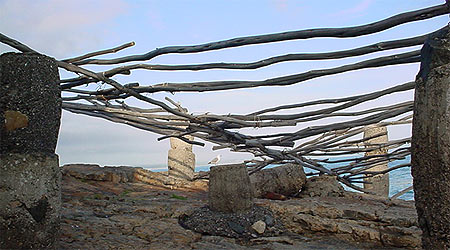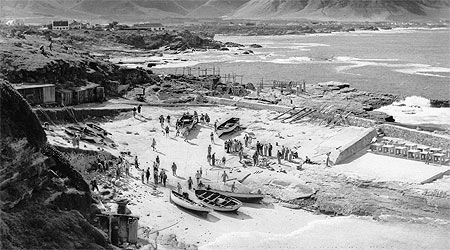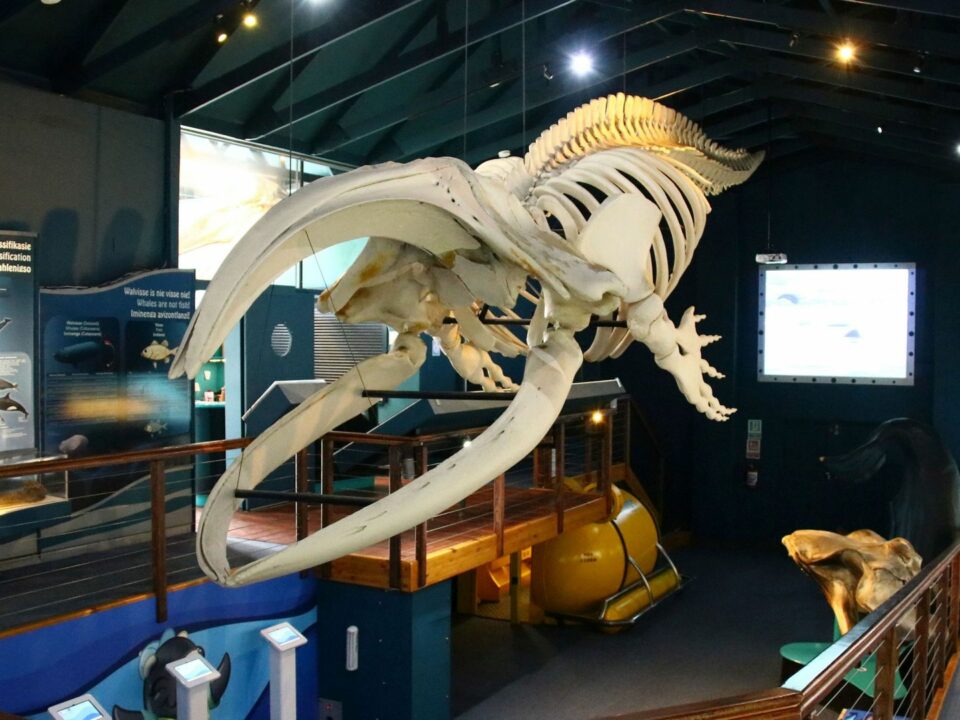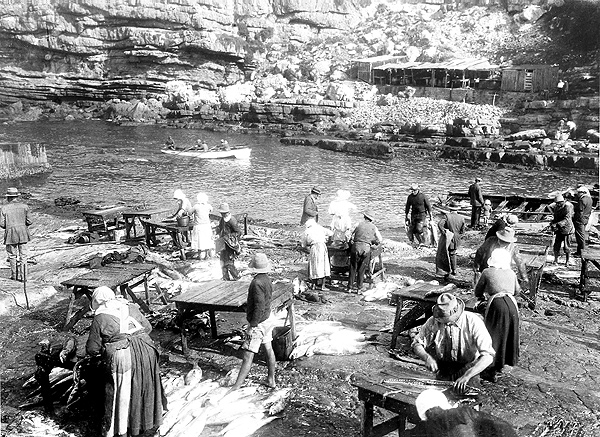Open Air Museum

Objectives
March 1, 2023
Fishermens Village
March 1, 2023Fish sheds and brine tanks
Stone and corrugated iron sheds dotted the harbour area. They provided shelter for the men and women whose task it was to process the fish. After the fish were scaled and gutted, they were rubbed with salt and placed in a brine tank overnight. In the morning the stopper was removed from the drain at the drain-holes are still visible), the fish removed, packed in wooden crates and transported for sale in Cape Town, Caledon and the surrounding
areas.
Fish Drying Stands
Fish drying stand or "bokkom" stand. "Bokkoms" or "doppies" were small fish salted and hung on poles to dry. Bigger fish, such as snoek, were also sometimes treated this way to preserve them.

Bokkom Stand in old harbour
Sea wall and Breakwater
Sea wall and breakwater -Until the breakwater was built in 1904, only the sea-wall provided protection from heavy seas and spring tides.

Airshot of the Old Harbour
Gutting Tables
Before these tables were built in 1936, fish were cleaned on wooden tables and benches wherever a level spac permitted out of the way of the boats landing.
Crane Hub
The crane was built in about 1910 at the water's edge. The idea behind it was to lessen the back-breaking task of lifting the boats out of the water. It was a disaster. The sling was hitched under the boat, and the crane slowly lifted it clear of the water. As it took the weight, the sling tightened and crushed the boat. It was tried only once more with the same result, and then abandoned.
Turning Stone
A rather inconspicuous, orange, squarish stone cemented into the hard (landing area), this stone was important to the fishermen who landed their boats bow to the beach. The boats were carried out of the water by 14 to 16 men. When they reached the turning stone, they rested the keel on it and swiveled the boat around so the bow pointed to the sea, and the boat was facing the right way of launching.
The winch and cable roller
The winch and cable roller were installed in an unsuccessful attempt to avoid the strenuous task of carrying the boat out of the water, a task which reputedly cost men their lives. The fishermen found the winch too slow, especially when several boats returned to the harbour at the same time, often in bad weather, so it was seldom used.
Boat Building Area
Once called the "hospital", this is where boats were built and repaired.
Museum Building
The building on the ramp leading down into the harbour was re-erected in 1977 and is a replica of the buildings which stood in the harbour in 1915. Originally these sheds housed fishing tackle, oars and sailing gear, and the brine tanks of the fishermen. Now they house the museum exhibition area and The Cave Theatre.
War Memorial
This was erected in 1929 to the memory of those who fell in the Great War. In proportion to its population, Hermanus sent more men to both wars than any other town in South Africa. In recognition to this record, the Union Government presented two war trophies (field guns) in 1929 to be mounted on either side of the stone cairn.
There eventually fell into disrepair and were replaced in 1963 by the present naval guns. Let into the stonework above the bronze plaque inscribed with the names of those who fell in both wars, is an aneroid barometer "to assist to protect the lives of present and future fishermen who represented the majority of the fallen of this area".




